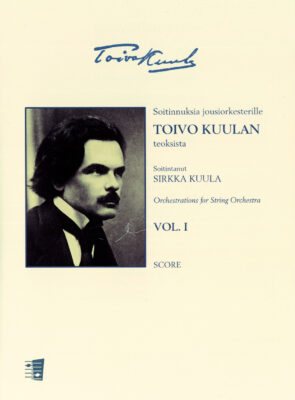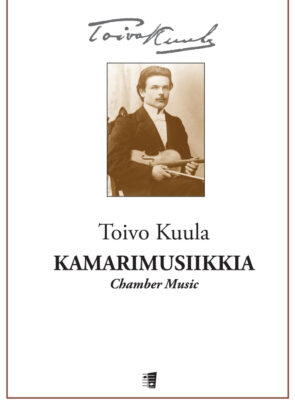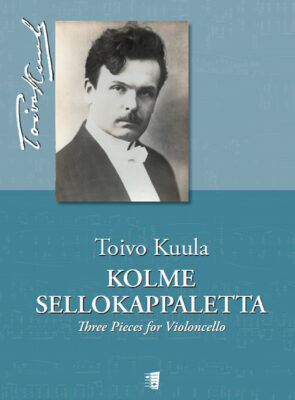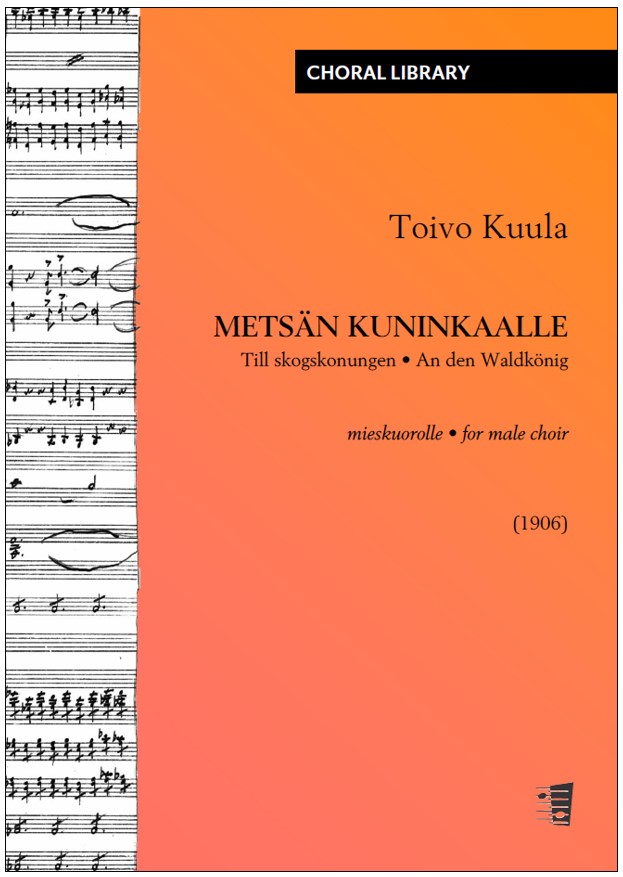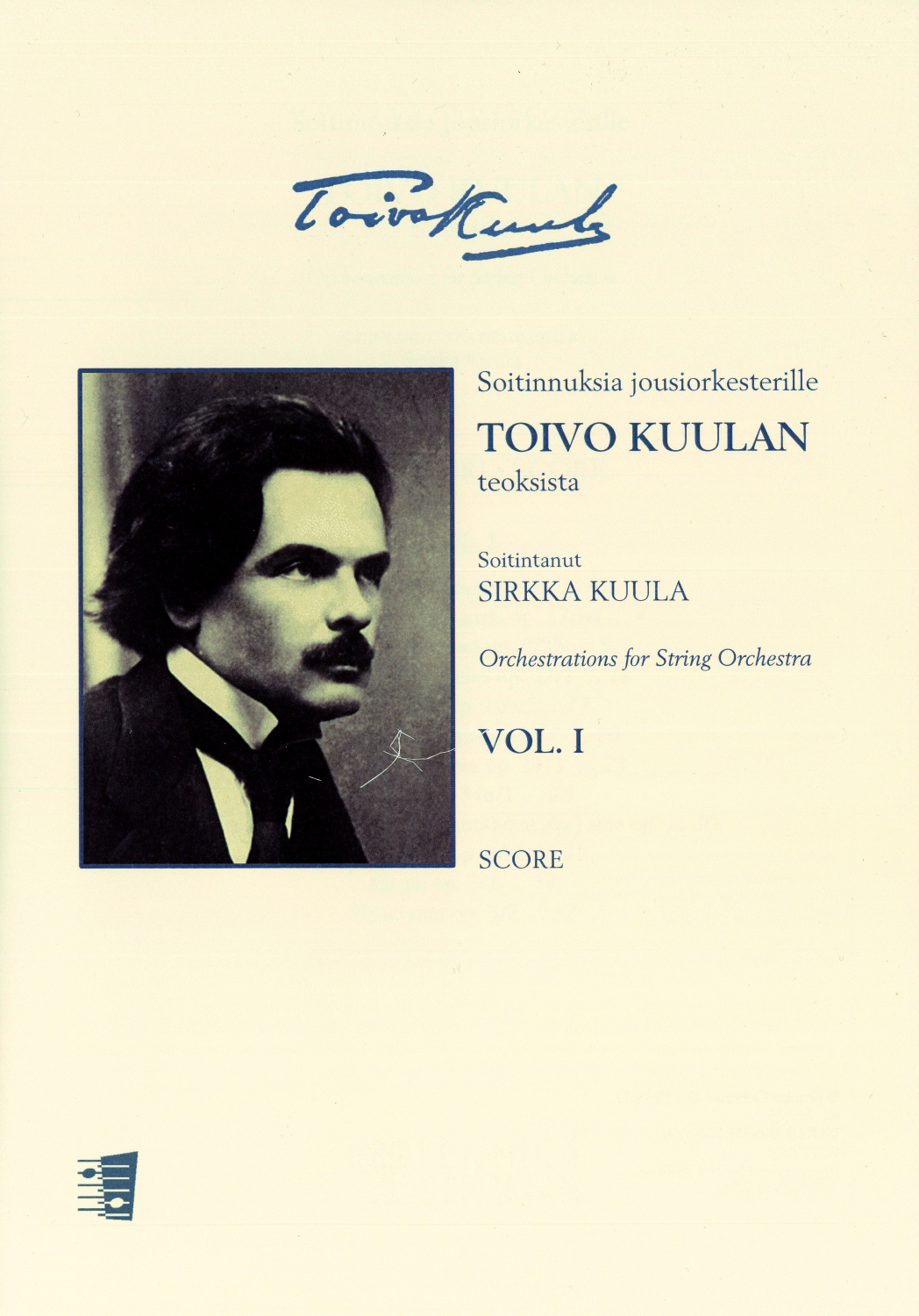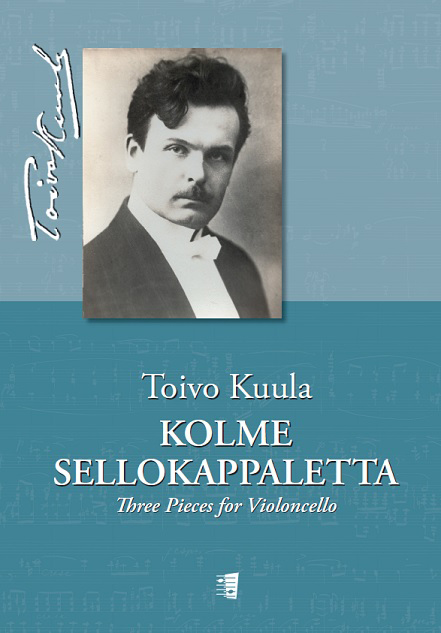
Kuula, Toivo
Toivo Kuula (1883-1918) studied the violin and music theory with Martin Wegelius at the Helsinki Music Institute in 1900–03. Later he became Sibelius’s first composition pupil. In 1908 he studied with Marco Enrico Bossi in Italy, and in 1909 with Hans Sitt in Leipzig and Marcel Labey in Paris.
His principal student works, the Violin Sonata (1907) and the Piano Trio performed in 1908, attracted great attention as large-scale chamber works had only rarely been heard in Finland; Kuula was also perceived to be a young champion of Finnish-speaking music culture.
Kuula was director of music in Oulu (1910–11), in Helsinki (1912–15) and in Viipuri (1916–18). In 1914 he married the singer Alma Silventoinen, for whom he wrote most of his songs and with whom he made extensive concert tours. Toivo Kuula died tragically at the final stages of the Finnish Civil War.
Toivo Kuula’s dark, impetuous, modally inclined Romanticism is mixed with influences absorbed from the new French music, in particular in the orchestration reminiscent of the French colours and the Impressionism of Debussy.
Kuula has become best known for his much-loved songs and for his arrangements of folk tunes from his native southern Ostrobothnia. He is also noteworthy as a choral composer, and his partsongs can be divided into three types: complex polyphonic songs; simpler songs; and light, rhythmically expressive, even humorous songs, including the folk-style Kanteletar settings.
Fennica Gehrman has published all the major works by Kuula such as the famous Stabat Mater Op. 25. His works for the strings and for the voice have been published in extensive collections.
Aamulaulu / Morgonsång, arr. Hovi
Aubade
for low voice and orchestra
2022-0000-str E-duuri / E major
Duration: 2
Aamulaulu / Morgonsång, arr. Koskimies
Aubade (1905)
for medium voice and string orchestra
str G- ja A-duurissa / Versions in G and A major
Duration: 2
Autumnal Mood / Syystunnelma [arr. Koskimies]
(1904)
for ochestra
1221-2210-01-harm-str [d minor]
Duration: 3
Epilogue
Epilogi
1122-2100-10-harp
Duration: 3
Eteläpohjalaisia kansalauluja (Vihko II)
for voice and orchestra
I Poijat ne kulkee kyliä 1121-2210-10-hp-str II Tuoltapa näkyy 1121-2210-01-hp-str III Hautalan Heikki 102(II=cl.b)1-0000-11-str IV Tuuli se taivutti 1121-2210-11-hp-str V Ketolan Jukka 1021-2000-10-str VI Hae pois vaan sormukses 1121-2210-10-hp-str VII Luullahan jotta on lysti olla 0021-2000-00-hp-str
Duration: 20
Eteläpohjalaisia kansanlauluja (sov. Kimmo Hakola)
baritonille, harpulle ja jousiorkesterille (1908/2012)
hp-str
Duration: 20
Häämarssi [arr. Jussi Jalas]
Wedding March
2(II+picc)222-2210-11-str
Duration: 5
Häämarssi [salonkiorkesteri] [SALES MATERIAL]
Wedding March (1908)
for small orchestra
1.0.1.0-0.1.1.0-0.2(Timpani, Tamburo, Gran cassa, Piatti, Triangolo)-harmonium-str(no vla)
Duration: 5
I Gazed Long Into the Fire
(1907)
for high voice and orchestra
2222-2220-str
Duration: 5
Impi ja pajarin poika
The Maiden and the Boyar's Son (1912)
for high voice and orchestra
2(II+picc)2(II+c.ing)2(II+cl.basso)2-4230-11(piatti, gran cassa)-hp-str
Duration: 13
Kesäyö kirkkomaalla / Sommarnatt på kyrkogården
Sommernacht auf einem Friedhof
for high voice and orchestra
0222-2000-hp-str
Duration: 2
Kohtalo / Das Schicksal / Fate
for medium voice and orchestra
11(+c.ing)22-2000-str [b minor]
Duration: 2
Lampaanpolska / Sheep's Polska
for small orchestra
1110-0110-02-harm(/pf)-str(11011) Percussione: Timpani, Tamburino, Gran cassa, Piatti
Duration: 5
Lapuan marssi
(1908)
for mixed chorus and orchestra
1121-2220-11-str
Duration: 7
Lauantai-ilta / Lördagsafton
Sonnabend / Saturday Evening
for high voice and orchestra
2222-2000-10-hp-str [A major]
Duration: 4
Lyö sydän / Slå hjärta / Beat, Heart
for medium voice and orchestra
0222-2000-10-str
Duration: 2
Merenkylpijäneidot / Die Badende Waldjungfrau
The Sea-Bathing Maidens
for high voice and orchestra
11(+ca)21-2210-11-hp-cel-str [Key signature: A minor]
Duration: 7
Paimenet / Herdegossarna (arr. Funtek)
Die Hirten / The Shepherds
for high voice and orchestra
2121-3200-11-hp-str
Duration: 4
Paimenet / Herdegossarna (arr. Jalas)
Die Hirten / The Shepherds (1915)
for high voice and orchestra
2222-4331-11-str
Duration: 4
Pieni balladi (Vanha vaimo)
A Small Ballade
for orchestra
1010-0110-str
Duration: 2
Preludio & fuuga
for orchestra
2222-4231-10-str
Duration: 12
Sinikan laulu
for medium voice and orchestra
1121-1000-10-hp-str
Duration: 3
Sinipiika / Die Wallmaid / The Wood Nymph
(1912)
for high voice and orchestra
2222-2000-10-hp-str A flat major
Duration: 3
Suutelo / En kyss / The Kiss
(1908)
for high voice and orchestra
2222-2320-11-str
Duration: 5
Syystunnelma / Autumnal Mood
(1904)
for low voice and orchestra
0022-2000-hp-gtr-pf-str [e minor, also c minor]
Duration: 3
Tule armaani / Kom, älskade / Come, My Love
(1915)
for medium voice and orchestra
2.2.3(III=bcl).3(III=cfg)-4.0.0.0-1.0-str
Duration: 4
Vuorella [PERFORMANCE MATERIAL FOR SALE]
(1913´)
wind band
Duration: 0
Yli kukkien / Über den Blumen / Above the Flowers
(1913)
for high voice and orchestra
2222-2000-10-hp-str
Duration: 2
Yö / Natt / Night
(1906)
for baritone and orchestra
2222-2000-str [e flat minor] No full score available.
Duration: 2
Yö nummella / Heidezauber
(1913)
for voice and orchestra
1111-1000-hp-str [a minor]
Duration: 3


